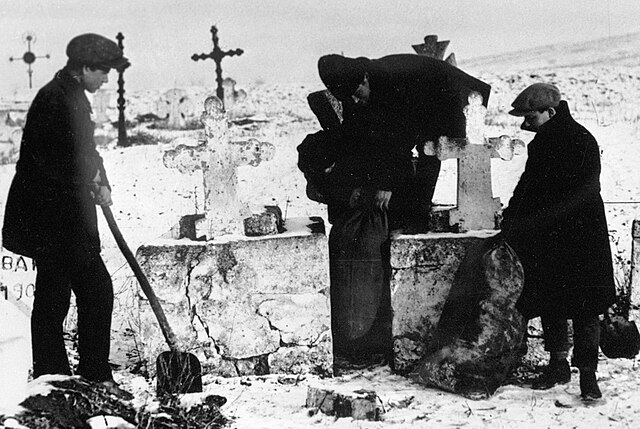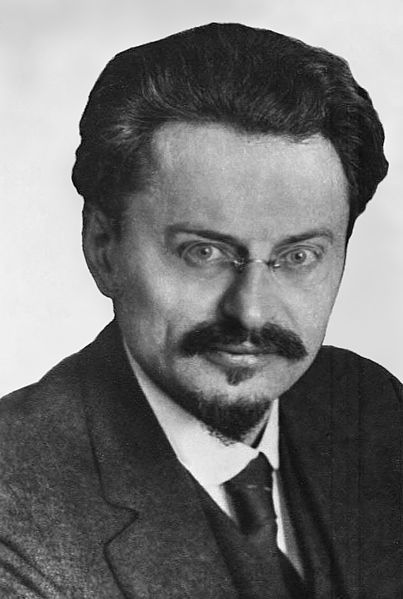Political repression in the Soviet Union
Throughout the history of the Soviet Union, tens of millions of people suffered political repression, which was an instrument of the state since the October Revolution. It culminated during the Stalin era, then declined, but it continued to exist during the "Khrushchev Thaw", followed by increased persecution of Soviet dissidents during the Brezhnev era, and it did not cease to exist until late in Mikhail Gorbachev's rule when it was ended in keeping with his policies of glasnost and perestroika.
Corpses of hostages executed by Cheka in 1918 in the basement of Tulpanov's house in Kherson, Ukrainian SSR, The Black Book of Communism
Corpses of people executed by Cheka in 1918 at a yard in Kharkiv, Ukrainian SSR, The Black Book of Communism
The contemporary caption says "YCLers seizing grain from kulaks which was hidden in the graveyard, Ukraine, 1930." At the height of collectivization anyone resisting it was declared a "kulak"
People of Vinnytsia searching through the exhumed victims of the Vinnytsia massacre, 1943
History of the Soviet Union
The history of Soviet Russia and the Soviet Union (USSR) reflects a period of change for both Russia and the world. Though the terms "Soviet Russia" and "Soviet Union" often are synonymous in everyday speech, when referring to the foundations of the Soviet Union, "Soviet Russia" often specifically refers to brief period between the October Revolution of 1917 and the creation of the Soviet Union in 1922.
Vladimir Lenin, founder of the Soviet Union and the leader of the Bolshevik party.
Leon Trotsky, founder of the Red Army and a key figure in the October Revolution.






